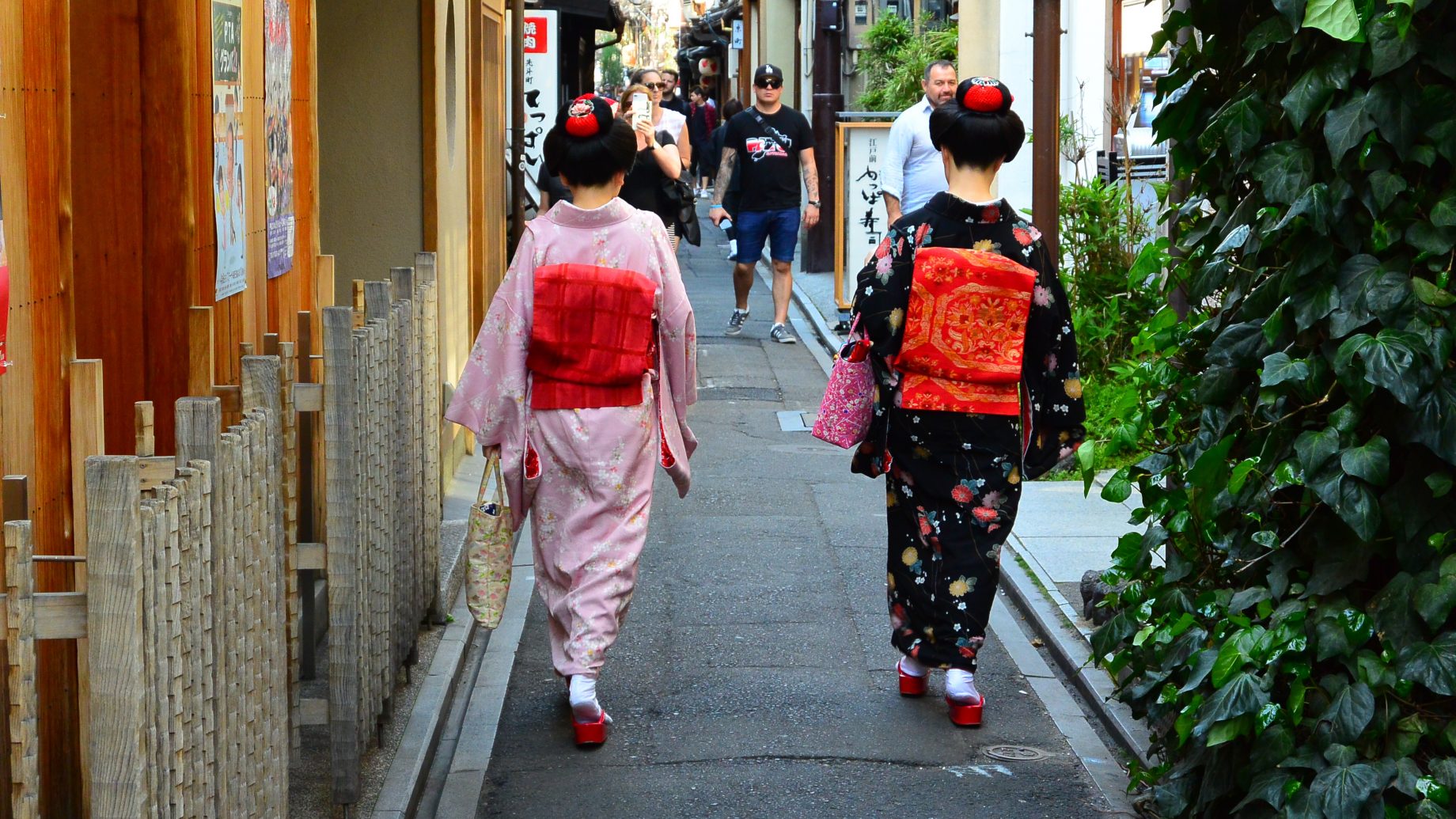We are leaving Tokyo behind and heading south-west to Kyoto today, on a Nazomi Super Express Shinkansen (bullet train). After packing our suitcases in the morning we went for a walk around Tokyo Central Station to stretch our legs and “people watch”. We have noted that the predominantly male middle class workers all dress the same – dark suits, white shirts, black shoes and a dark tie. Clearly any deviation from this uniform will result in either diminished career opportunities, or some form of rejection by your peers.
Much of what happens in Tokyo takes place below the street surface. The extensive rail network operates largely underground, linking stations that are interconnected to offices and shopping malls via a labyrinth of tunnels and walkways, stairs and escalators heading to all points of the compass. The peak hour (or is it hours?) rush takes place largely below ground. Small convenience stores and food outlets offer a variety of items for sale to the dark suited army of workers.
Above ground, things are more sedate and less crowded. As we walked around this morning, the sun was fighting to break through a classic Asian overcast sky that is comprised of humidity, pollution, dust and pollen. A deep blue sky is possibly a rarity here. Humidity has been around 40% to 50% since we arrived, with mild temperatures making our time as tourists very pleasant.
Our best find for a decent coffee was in the network of underground passageways close to our hotel. A well trained barista was serving cappuccinos (that would pass for a decent coffee in Melbourne) from an Eataly franchise identical to the one we are very familiar with in Chicago (only smaller).
Later, when checking out of our hotel, we were happy to accept the offer of assistance with finding our departure platform and led on a confusing walk through the Tokyo Central Station by a member of the hotel staff. Our “guide” even managed a wrong turn himself at one stage, and we were grateful for his assistance.

The routine of Shinkansen arriving and departing was operating like clockwork across multiple platforms. Ten minutes prior to its scheduled departure, a train would arrive and incoming passengers would disembark. When the last passenger had exited, the carriage cleaning staff would do a walk through removing rubbish. One would then spin the seating around so it faced forward in readiness for the next departure. The cloth headrest protectors were all removed and replaced. With just 6 minutes until departure, cleaning staff had finished their chores and left the train with all doors closing behind them. With 5 minutes to go the doors to all carriages opened again and passengers made their way on board. With just 30 seconds to go before our 10.00am departure an announcement was made, the doors closed and right on the dot of 10.00am and we were on our way.
We appear to have averaged close to 250 kph on our journey to Kyoto. The polluted skies have persisted, reducing visibility to a few kilometres. We have passed through heavily urbanised flat lands and never strayed far from the coast. Small market gardens occupy any spare land, with arched plastic hot houses often sighted in neat rows trying to make the most of the filtered sunlight and likely cold winter conditions.
Powerlines criss-cross the landscape and straddle the approaching hills. It seems to be commonplace for houses to be two stories, maximising the small footprint they have and providing a small patch of turf for a few household vegetables to be grown.
After stopping at Nagoya briefly, we have swapped out a few passengers and continued on our way into undulating countryside. Our journey is interrupted by frequent tunnels through densely treed steep hills. The hills are too steep for agriculture and are the first signs of “bush land” since leaving home.
We arrived right on time in Kyoto and joined the queue of people waiting to exit the platform via escalator. This seemed the best option, given we were travelling with all our luggage. We consulted our tour notes for directions to the Royal Park Hotel, Kyoto and went in search of the subway, a ticket vending machine and platform two on the Karasuma Line. Two stops later and we had to change to another line then continue for one more stop before making our way back to street level for the final short walk to our hotel.
As is often the case, check-in was not until 3.00pm (it was now a little after 1:00pm), so we left our luggage and set off to find somewhere for lunch. We must have been hungry, because it took little time to be seated in a restaurant that specialised in sobu noodle dishes. Chris had a combination with prawns, pork, chicken, vegetables and Kyoto specialties (whatever they were). Wendy decided on a tempura prawn and sobu noodle dish. Within minutes we were both slurping away and enjoying what was a late lunch.
We then headed over to the Kamo River to find the meeting point for a small group night tour we had booked ourselves into before leaving Australia. The river was a popular destination with people out for a walk or a bike ride, and we were constantly weaving in and out of approaching walkers and cyclists. Kyoto is surrounded by mountains to the north, west and east; the Kamo river runs north to south so it bisects the city and provides a useful landmark when exploring.
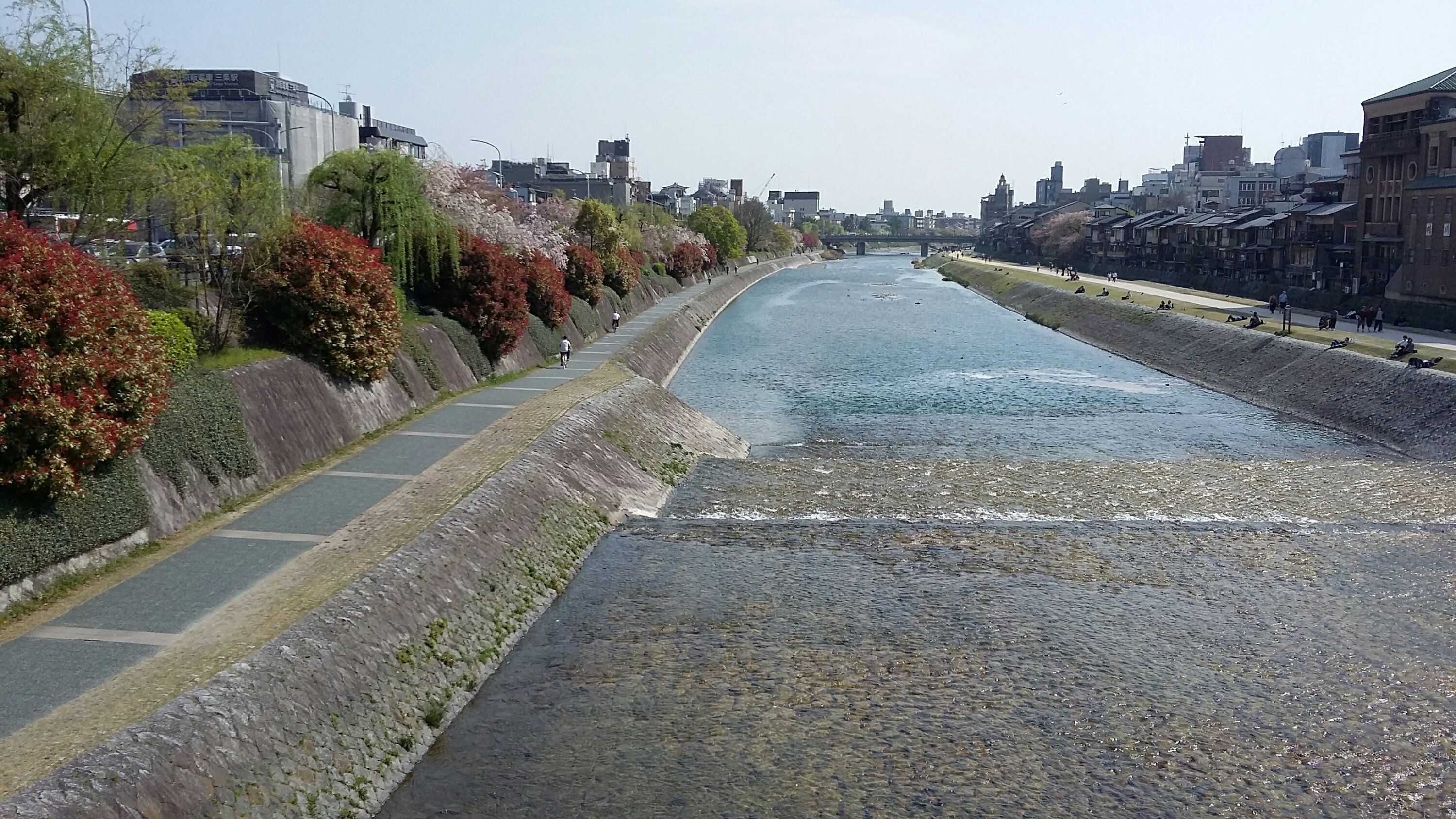
Our meeting point for the evening walk was beneath a statue of Izumo no Okuni, a famous 17th century shrine maiden attributed with being the founder of the kabuki form of entertainment (and ultimately the geisha). We were already noticing that traditional dress is more prevalent in Kyoto and the notion of an active geisha community (or is it an industry) would not surprise.
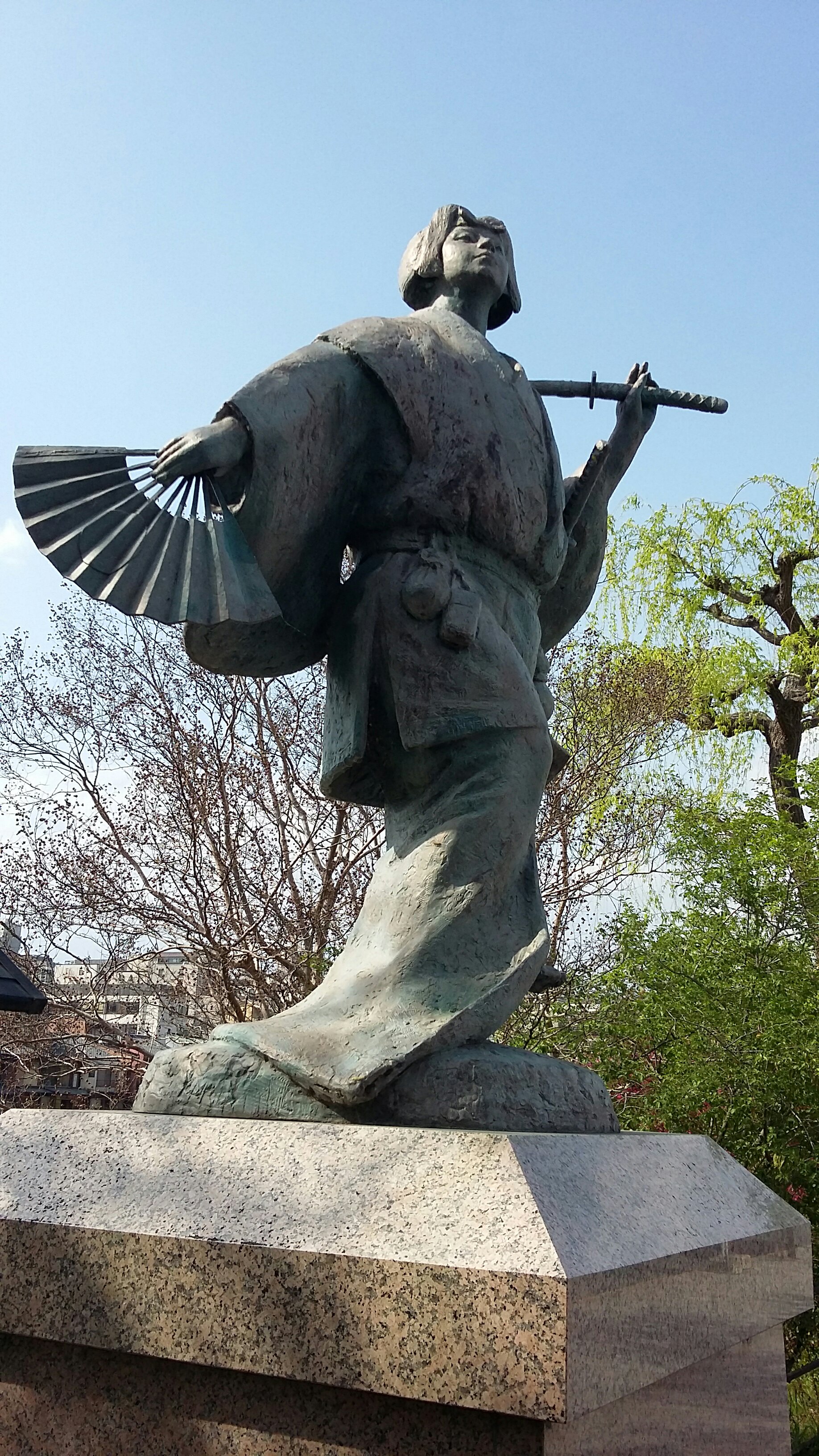
Just before 5:00pm, we set off to meet our guide for a walk through three of the older districts of town where geisha board, practice their disciplines, and entertain their clients. Light rain was falling as we headed over to the start of our guided walk and our umbrellas appeared for the first time since leaving home.
Our guide, Greg, arrived on time and gave us a run down on the history of the geisha (in Kyoto, they are referred to as ‘geiko’ which translates to ‘child of the arts’) and the districts we would be visiting on our walks. He also gave us an insight into the life of a geisha – how they serve a lengthy and demanding apprenticeship (when they are known as maiko) where all manner of skills and disciplines have to be developed. A strict hierarchy also exists, and both make-up and choice of fabric colours tell where a geisha fits within the hierarchy.
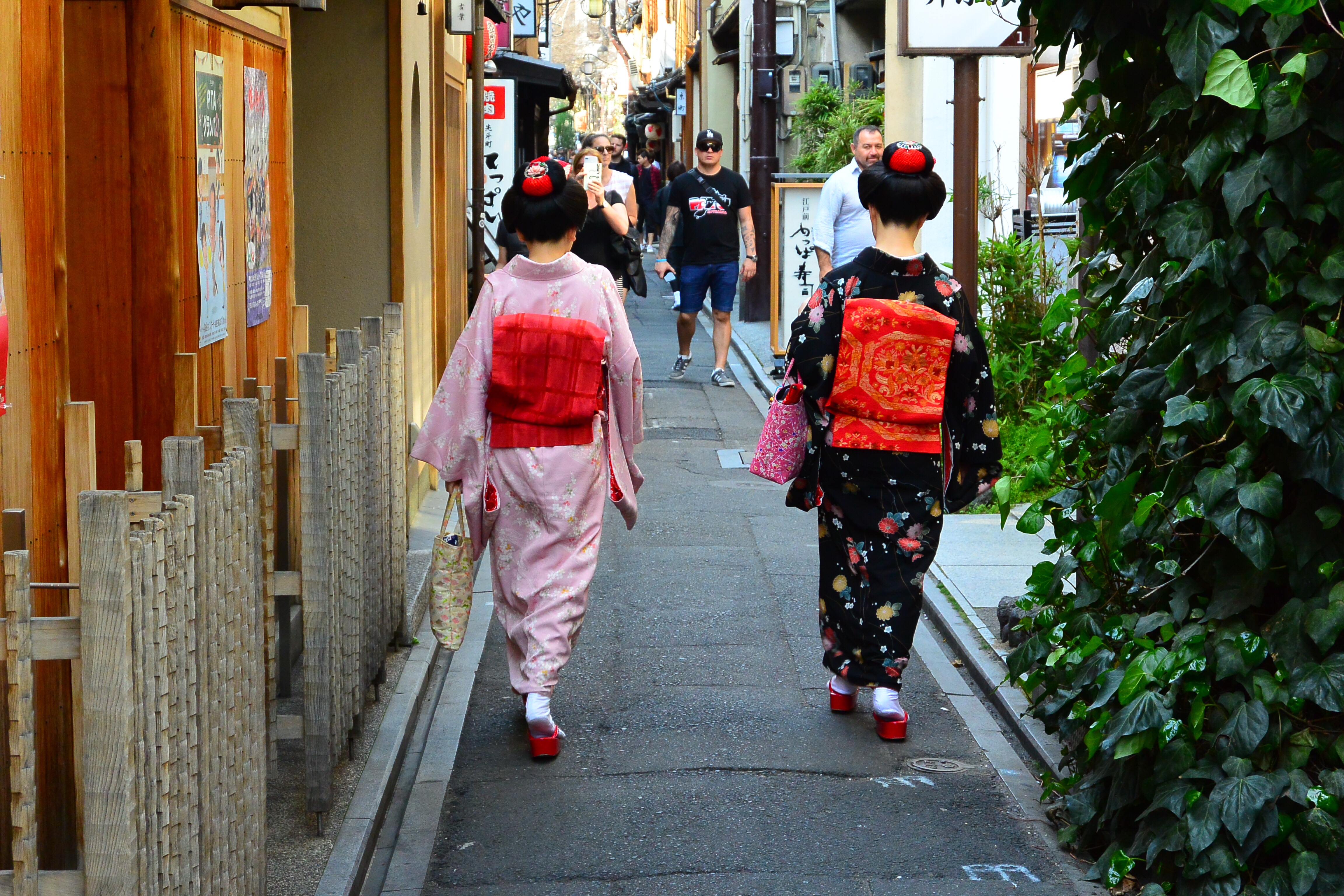
We walked through narrow streets lined with tea houses, where geiko ply their trade. Other buildings were theatres where geiko would perform; others again were boarding houses where maiko would stay, under the guidance of a senior geiko (known as a ‘mother’) throughout their apprenticeship. Doorways were adorned with talismans seeking good fortune, and small cones of salt often sat outside the entrance to these narrow houses as a sign of purity.

Our guide took us through a Zen Buddhist temple – Kyoto is the spiritual centre of Zen Buddhism in Japan and there are apparently hundreds of temples dotted throughout the city. We discussed gunboat diplomacy and the motivations for the USA to demand that Japan open up to trade in the 1860s. We touched on the politics that resulted in the split in samurai ranks, leading to one faction aligning with the emperor while the others looked for a more moderate path forward – and how sword fights between these factions would often erupt in the narrow streets of Kyoto.
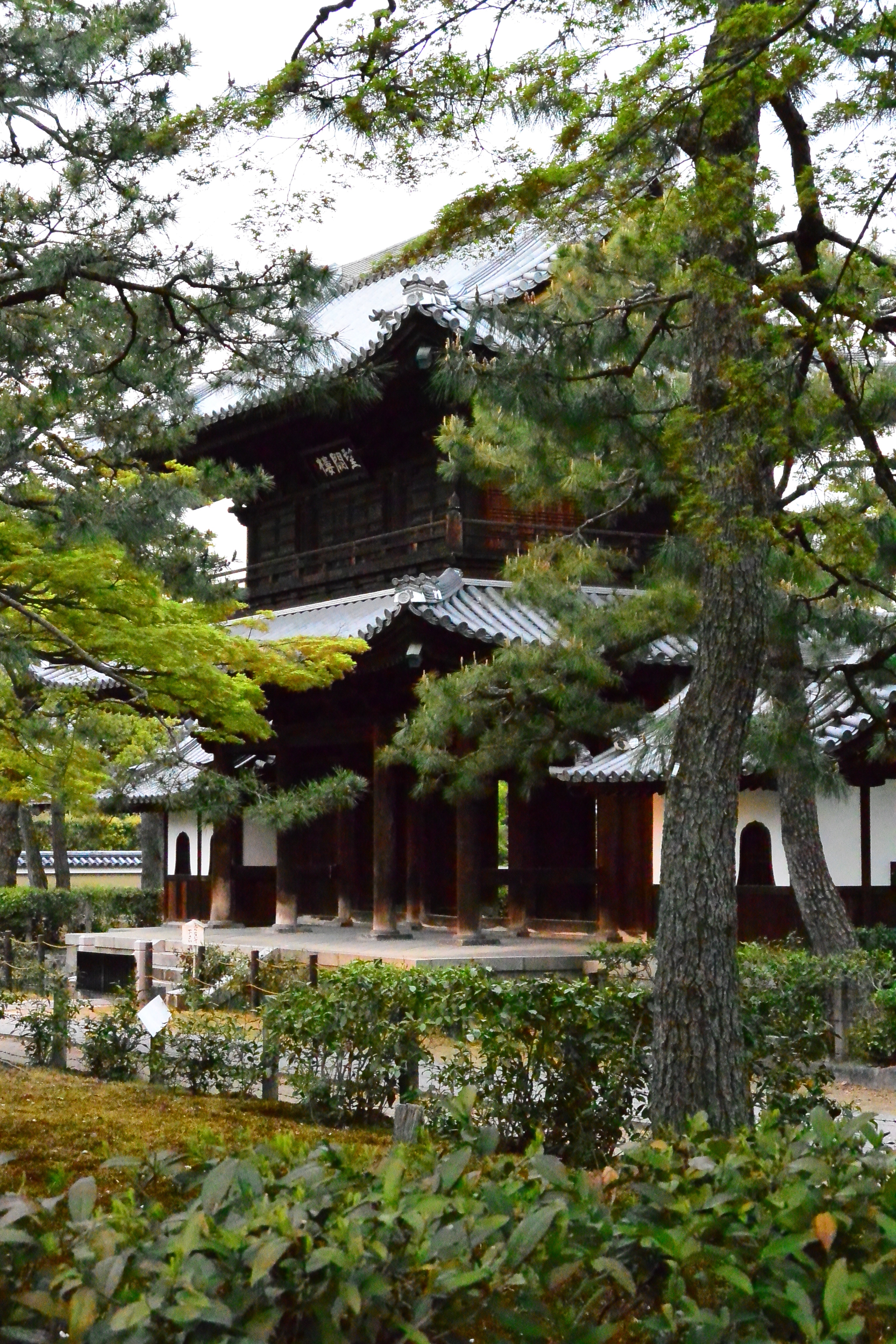
We observed a number of maiko dashing between performances in one of the many theatres and their tea house commitments, with a change of outfit required between venues. Apparently a dresser is required to properly wind the metres of fabric that make up the “belt” and achieve the desired outcome.

At the conclusion of our walk we retreated to the comfort of a restaurant that specialised to yakitori (grilled meats and veggies on skewers). It was very tasty and a great way to finish off the day.
